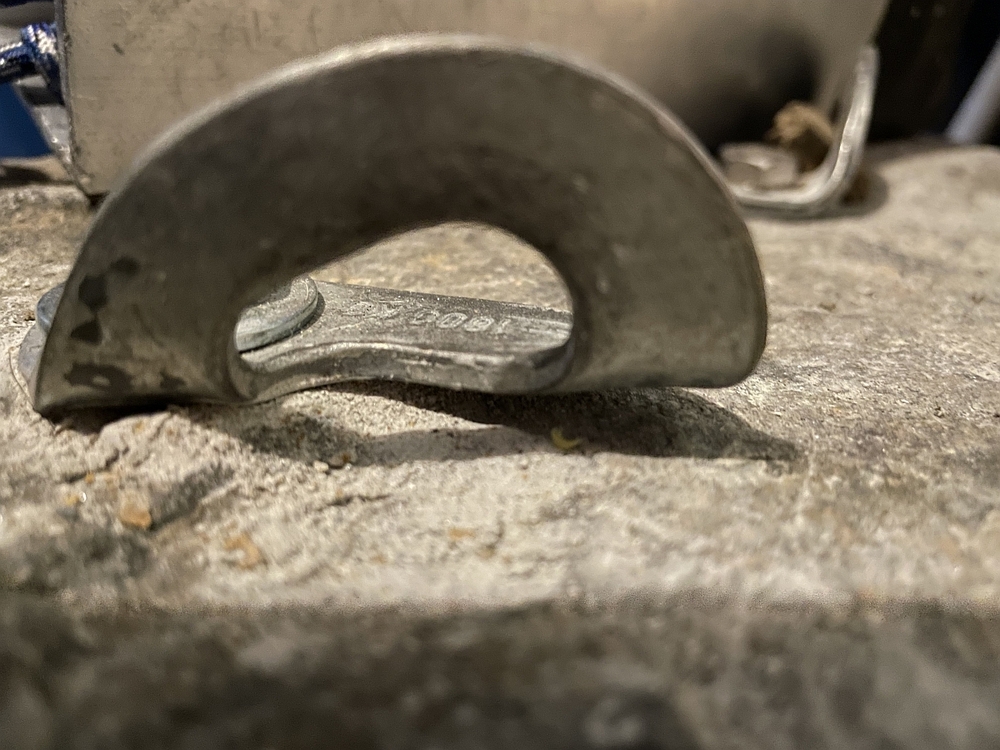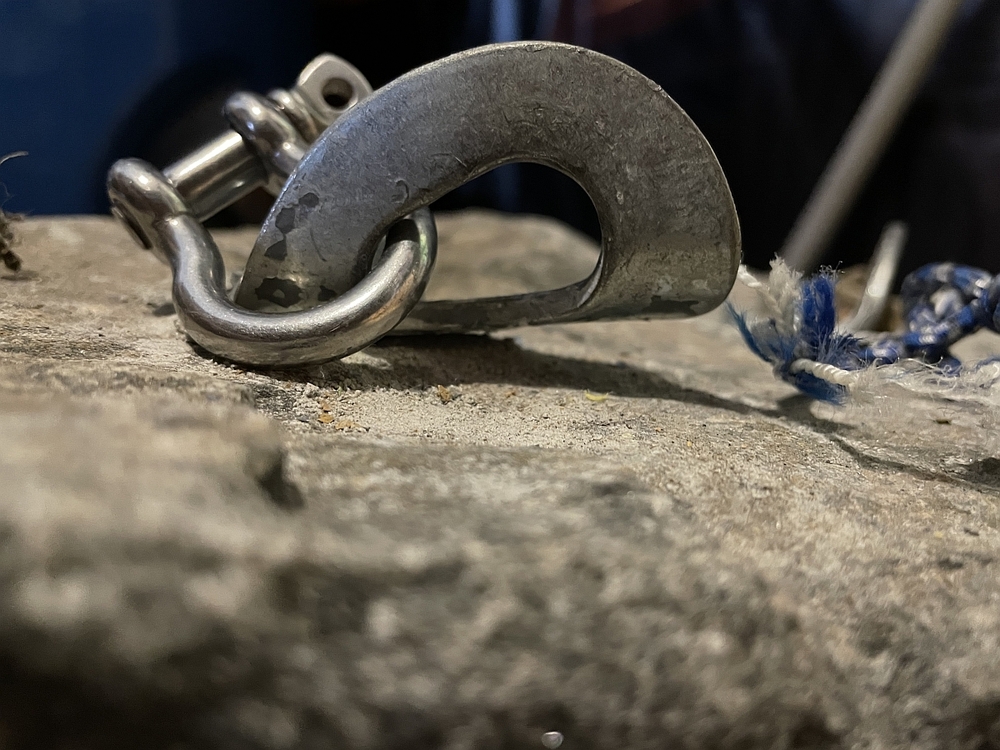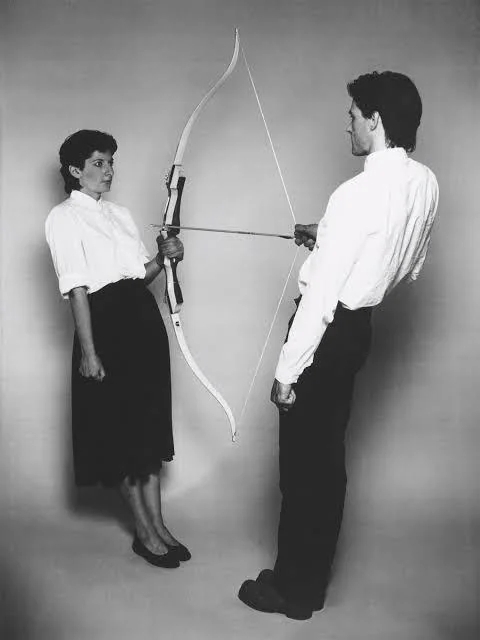Non-destructive pull testing of in-situ bolts
|
|
I've been working on a method of non-destructive testing for bolt placements. I'm not yet sure if this is something that will even be useful or wanted, but it might be helpful for someone out there. It's reasonable to question whether this data point would be of any use. My thought is that it could be used to check bolts that have been reported as suspect by one climber but appear to be adequate by another - edge cases. In large crag overhaul efforts, a few randomly chosen bolts could be tested as a quality control measure. I'm using a Hurley Sr style device with a large enough spacer to fit over a bolt hanger. Instead of a yoke that is pinned directly to the bolt hanger, the idea is to have an eye bolt on the draw stud end and a shackle on the bolt hanger. In between I tie a loop (or loops) of 550 Paracord. Crank on the draw stud until the cord breaks and you get one data point: 'This bolt withstood (x)kN of axial pull'. It would be similar to the bounce test that an aid climber does, but slightly more standardized/repeatable/quantitative. Ryan at HowNOT2 was kind enough to break and measure a few loops to get an idea of the sort of force to which the bolt would be subjected. A single loop of 550 cord tied with a double fisherman's knot breaks at ~4kN. I had hoped to get a repeatable test that would be 4-6 kN in order to arrive at the, 'I'd whip on that' assessment (since lead falls are mostly shearing force, not axial). If this idea seems useful, I still need to come up with a better pull strategy like a hoist ring or eye nut directly on the bolt. I pulled on a sample bolt in a test boulder to check whether this is a good idea, and at 4kN the hanger bent away from the rock by a disagreeable amount. Any thoughts/suggestions/ridicule? (As I said at the beginning, I realize this might be a solution that is looking for a nonexistent problem, but sometimes that's how you find useful things) |
|
|
Shout out to Gregger fighting the good fight |
|
|
How beefy of a funkness/slide hammer would you need to generate similar forces? With either of these you could have your test force in the same direction as a fall would be, and it wouldn't bend the hanger outwards. |
|
|
Alex R wrote: I had originally planned to use the funk to break loops, but the 550 cord has a little bit of stretch which makes it more resilient than you would like if you were repeatedly funking it. I couldn't break a double strand with my standard length funkness and Dammer hammer. The monster ~4lb funk hammer I made for ACE would do it, but it's probably not practical. Thinking out loud: You could just use a turnbuckle and a static line extension to test one bolt against another pulling both in shear. Pull two loops to get ~8kN shared between them. I doubt that 4kN of upwards shearing would deform the lower hanger, but I don't know. An axial pull gets at the most likely failure mode, tho. |
|
|
Can't provide input on if this device actually has a use, like you wonder. But for the sake of discussion- The tensile fuse device is a good one and is used in many industrial applications. I would be curious to see pull tests of a variety of 550 cords from the various places climbers might head to for sourcing. The test is useless if you don't have a very constant fuse trip. You already have the challenge of the variable introduced by the double fishermans and how dressing knots can effect the strength- especially in small cords with tight radii in the knot structure. Add to that the fact that most paracord at bulk stores probably isn't made to the Mil-C-5040h standard and you might find a 50, 100% or more variation in you fuse set point. Maybe Mr Jenks can supply some insight. |
|
|
Could you eliminate the stretch issue by using a 1 or 2mm dyneema line to do the funk-break test? Or a steel wire of the right diameter? Could you take the hanger off the bolt in question and pull on the stud directly using your method? Another thought is to make and measure a mini funk/drop-test with a known amount of weight that generates forces similar to a lead fall. Without doing the math, imagine a 20lb weight taking a FF2 onto the bolt using a 1m steel cable generates 8kn. Maybe it's possible to use soil or rocks in a burly stuff sack/mini haul-bag for the weight. Tensioning one bolt against another could spin the hangers, might not be the best option, plus if that cord is running over any edges and features you'll get unwelcome friction effects. Maybe tensioning against something on the ground? |
|
|
I have a 3/8-16 eye nut that would work for most wedge bolts. 5-piece bolts would require something different. I think I have seen a symmetrical double-eye hanger somewhere. Anybody remember who makes them? Rigging between bolts or doing drop tests is way beyond the amount of effort I envision. The method I have at present takes about two minutes from start to finish. Tie a knot, spin a wrench, bang! |
|
|
The funking idea sounds great, that way you could test in the direction of pull. All you would need is a disposable sling/wire/cord that snaps at 4kN and a beater carabiner (since the inside edge of various hangers can be sharp). And it would take a few seconds with no device needed (other than a hammer of course). The Bonier hangers are symmetrical, but you wouldn't want to have to swap hangers, too many things can go wrong. But all of this begs the question - why? Seems to me that any test that produces enough force to bother doing the test to begin with is likely to break rock out from behind a hanger, loosen up the bolt, etc. |
|
|
Greg Barnes wrote:Because Gregger Man is like Batman. They both are pursuing their nerdy interests and curiosity through gadgetry, and the public good is just a fortunate byproduct.
|
|
|
Greg Barnes wrote: Philosophically, I'm with Greg on this one. Both for the reasons stated above and because that in Central Oregon our approach is more about the overall age of the bolt and less about a qualitative assessment of its strength. We've found that if you wait too long with an old plated expansion bolt, the bolt often becomes terminally corroded to the point that going hole for hole is way more difficult. In light of that we've just started trying to replace anything plated that's older than 20-30 years. Part of this math is also the fact that our long term vision is to upgrade anything on welded tuff to glue ins. I like the idea of having objective metrics for answering the question of if a bolt is actually 'bad', but our SOP is just to replace whole routes and avoid doing patchwork repairs. Often if one is bad, we figure we might as well just fix the whole pitch if we're going to drag all the gear out there. The bolt nerd in me likes the tool and the data gathering potential, but I'm not sure I'd ever see us using it with any frequency. And don't get me wrong, I think Greg (German) is the man and am incredibly appreciative of what he's done to democratize rebolting. |
|
|
Yeah- it's a geeky concern. It would need to be a quick, cheap, lightweight way to stress a bolt to a fraction of it's ultimate breaking point in order to know if it's absolute crap or 'fine for now as far as I can tell'. I've replaced bolts on both ends of that spectrum - some would have caught big falls for decades and some slipped right out of the hole under shockingly little force. If a bolt were extracted using one strand of Paracord that would be an interesting thing to know about it. Would it be useful information? Not certain. Edit to add: Geek credit- The current Lowes ad bothers me because they show a girth hitch that is animated as if it rotates 180° yet the nipping loop stays in front of the load bearing strands from _both_ sides!!!111!1!? |
|
|
Alec Baker wrote: Um - you are looking for a very different sort of guarantee of strength than I am talking about. I want an indication that the bolt is still capable of a light to moderate load so that I'm sure it was at least installed correctly and 'probably adequate'. Breaking a climbing rope on a bolt is something philosophically different - that is seeking certainty that the greatest force I could possibly rig with climbing gear would not break at that particular link in the chain. That wouldn't be non-destructive. I'm ok with life being less certain than that. |
|
|
I feel like the best use cases for this kind of test are:
Both of these use cases would work better with a different setup for force generation. A piton might be good enough in the direction of a fall, but pull out under axial load. Soft rock tends to fail in a cone around the bolt. It might hold a much greater force when the puller is pushing against and supporting this cone of rock. |
|
|
Alex R wrote: I think both of these wouldn't be 'non-destructive'. Pitons are wiggled out side-to-side if you want to do minimal damage to the crack. Pitons also don't have specified target strengths for axial/perpendicular pulls. The nature of pitons is that the quality of the placement changes from season to season (or day to day) and there's no changing that. Testing weak rock by trying to blow out a placement is not what I would encourage, either. Soft rock calls for glue-in bolts. The reason I thought this might be helpful: it would cause a newly installed 1/2" 5-piece bolt to slip if the cone had caught the end of the sleeve and torqued up instead of expanding the sleeve. It would also make an old wedge bolt slip if the collar were diminished sufficiently by corrosion. |
|
|
Here's a thought: replace the tube on a Hurley with a mountain bike rear shock spring. Compress until you hit your desired test load. |
|
|
mtnmandan wrote: Yikes. What's going to catch the recoil if the bolt pops? What's going to indicate the test load? Who's handing out cheap MTB springs? (I'd watch if you want to do the test, tho) |
|
|
Gregger Man wrote: Another use case that pops to mind is testing 5/16" buttonheads. Most of them have good hangers, most of them are a total pain to remove since they are so strong, but every once in a while they just snap under body weight. Of course I'd rather see every single one replaced, but if there were a bunch this could be a way to prioritize. Also many 5/16" buttonheads are coupled with stainless SMC hangers, so doing this test you'd probably bend the hangers outwards a bit (or a lot...). |
|
|
Gregger Man wrote: Lol. Love the memes. Going rate for second hand springs is about $20. They are linear coils and come in various weights, so the distance you compress is proportional to force. Stored energy is a good question. You'd definitely want to keep your face away to avoid losing teeth. They don't weigh that much and only move about 2 inches, so I think you could probably hold it in place with a handle, but it would likely need some careful testing and possibly some other means of catching a broken bolt. |
|
|
A stitch pattern on light web would be pretty constant. For example the strength of simple straight stitches in line with the pull can be measured . B69 nylon holds about 10 lbs a stitch. So 10 stitches per in for a total 9 inches tacking back and forth over a couple of inches of web would be about 4kn. Test it, stick with the same web, thread, stitch pattern. Add or remove number of stitches for different break strengths. You could even have several stitched joints (or bartacks if you have access to that type of machine) in one piece of web that would give at different force levels. A classic 42 stitch bartack machine with that b69 thread yields a 1kn tack. |

 Continue with onX Maps
Continue with onX Maps Sign in with Facebook
Sign in with Facebook




























